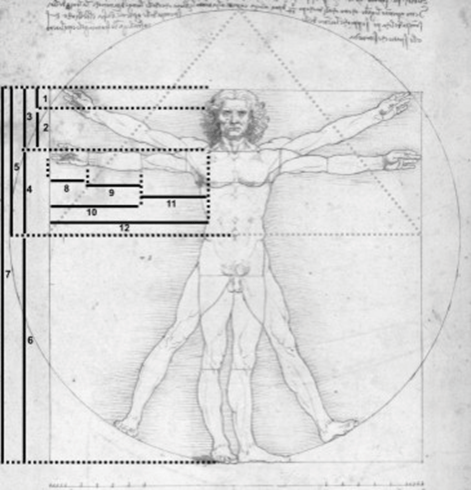Miguel Ángel Padilla
There are formal structures that because of their proportions and internal relations induce our mood in different directions.
This occurs specially with the music that so directly influences our emotions.
Nature also works in this way, using forms and precise proportions for life to be manifested. Walt Disney, creator of so endearing cartoons that had so much impact in the twentieth century, using touching forms with round eyes and big heads discovered a natural principle. Nature, in the early stages of mammal’s life, mainly in its stages of puppy breeds uses some forms with certain curves and proportions (for example the proportion of the head respect to the body). These forms will be later transformed but in those first months generate in adults an unconscious sense of tenderness inhibitory of aggression, enhancing their safety and protection. This has been extensively studied in the world of children’s entertainment and toy manufacturing.
Even in today’s car design they try to make us identify with the vehicle through emotion. For that reason they use proportions and shapes, predominance of curved lines over straight, size, etc.
Architecture and design have strongly relied on these formal relations with the human psyche. Humans can feel good in a harmonious space, natural or man-made, or oppressed and disoriented in an architectural space that is not built with proportions and formal elements in accordance with the human being.
The same applies to music. There are tracks that lead to states of relaxation, elevation, heroic exaltation, introspection, fear, etc. Cinema uses music associated with images to bring the viewer to experience different moods. If we try to watch a horror movie without sound we will experience that does not convey us nothing, or perhaps it will become a comedy.
It seems obvious the existence of proportions and formal relations in nature through which life is expressed. But why nature favors certain shapes?
Natural forms have been shaped not by chance but by immutable laws. These laws are manifested in proportions that determine only a few basic structures whose infinite combinations produce the great diversity of all shapes in nature.
The beauty of this nature that captivates is not accidental but responds to a specific provision of the parties regarding to the whole we observe.
What profound reason leads us to consider that an object with certain proportions is more beautiful than another? What is it that makes a certain repetition of patterns or sounds encourage us to lofty sentiments, or a special arrangement of elements induce us to calm, strength or safety? Why certain proportions, rhythms or balances awaken our aesthetic sense?
Maybe these three elements; rhythm, balance and proportion, are the factors that determine what, in the world of forms, we find pleasant and beautiful and what is not.
Rhythm
The rhythm is a repetition that obeys a law governing such repetition. (This law can be simple, binary or ternary creating, for example, a march or a waltz respectively. Or more complex as the so-called succession of Fibonacci governing leaf growth and containing the Gold Ratio).
Generally a bare surface is less pleasant to contemplate than if we lay out lines on it that obey a rhythm.
The rhythm suggests life as it manifests through it, during the seasons, in the heartbeat, the ocean’s wave … Its expression is the manifestation of the beginning of life.
Rhythm is also the basis for the understanding of symmetry and perspective since both are based on rhythms of generation and development.
Another quality of rhythm is to shift our consciousness in time and space generating the idea and the fact of motion.
Balance
Balance is another element that greatly contributes to an aesthetic impression.
Depending on the different elements of a composition are in balance or not will gives us a feeling of pleasure or displeasure.
Once again resonance creates in us through a sort of mimicry attitudes that the observed set manifests.
For example when looking at a beautiful oak we feel a physical and psychological tension comparable of being firmly planted on the ground, unlike the lightness that produces a suspension bridge of thin steel structures.
The observation leads us to deduce that the aesthetic satisfaction seems to manifest in man more in dynamic than static balance.
Static balance is characterized by symmetry on an axis or plane. This form of balance manifests stillness and coldness, because in its symmetry no life is suggested.
However the dynamic equilibrium keeps other kinds of symmetries, such as compensation symmetries, reflecting the image of the law of constant equilibrium that follows the nature through all its inequalities.
Thus, the dynamic equilibrium reflects a need for movement of resolution calling the perfection that still does not possess.
One of the most interesting elements within the set of universal laws that shape the structure and vital process of the Universe is the game of dualities to which all nature is subject. In the East it would be called the opposite’s harmony. Two complementary forces, Yin and Yang as an expression of Unity, active and passive one another, male and female, expansive and receptive are combined and harmonized in a vital dance.
Art plays with that duality. The hardness or softness, lightness or darkness, sharped or curved, solid or ethereal, all that would present a creative language that speaks to the psyche and channels the different energies of life.
Proportion
One of the most important elements found in Renaissance art, rescued from the old treaties of antiquity, is the golden ratio or divine proportion. The so-called Golden number would be expressing an existing proportion in nature and involved in its beauty and harmony.
The golden ratio establishes a harmonious relationship within an object or a being, of the parts themselves and these with the whole set, so that small is big and big is the set of both.
Let’s suppose we want to divide the unit (a line for example)) into two unequal parts so that there is a relationship or ratio such that small (fragment is big (Fragment B) and large (B) is at the total (complete line or A + B). At this rate it was called golden ratio or number of Gold and is 1,61803.

Classical considered the intelligence of the universe, when generating infinite forms, used, among others, this proportion harmonically linking the parts to the whole. This proportion has been present throughout nature, from the pentagonal symmetry of flowers and fruits to the logarithmic spiral that governs the growth of many plants and animals. Our whole body, so masterfully immortalized by Leonardo da Vinci in his human canon, reflects this ratio.

In the antiquity mathematics had a broader and deeper sense than we give today. Mathematical mysteries revealed pure ideas and relationships between the physical elements when projected in the world of forms through geometry, containing for the Initiate the key with which the Divinity organized and built the universe.
The golden number or Fi is not the only one who reveals these extraordinary nature’s relationships. In ancient times it was also known the Pi number that expresses the relationship between the circle and the square, between the sphere (3-dimensional) and plane (2-dimensional), philosophically leading us to the relationship between the soul (symbolized in the circle) and the body (symbolized in the square).
The human knower of these mysteries has tried to make his creations part of the secret order of the universe.
For both Plato and Pythagoras the gestation of the universe is an impulse guided by a cosmic intelligence that descends from the plane of pure ideas to material bodies.
The mysteries of Art tried to reveal these laws to know the secrets of the creation of life and beauty.
The golden ratio is present in the sacred art of Egypt, India, China, and the Islam. It dominates Greek art and reemerges with great splendour during the Renaissance. The so-called divine ratio is one of the standard composition’s methods mostly used in art throughout history.
It is amazing to see how even in its simplest forms, this ratio induces the human being to aesthetic feeling.
No wonder that today, beyond fashion speeches on aesthetics, is constantly used since in credit cards, even in advertisements.
The truth is that unconsciously the contemplation of the golden ratio recalls life and beauty, and is an expression of this reflex, that is one of the factors that causes aesthetic satisfaction.
This harmonic proportion awakens resonances in mankind. When better “Interior tuning” more elements can the art recall in ourselves, so that harmony and beauty around us contributes to our inner harmony.
We have stopped in these areas to understand the importance of the existence of natural principles that govern mankind and life.
His knowledge will make us possible to deepen in the mystery of beauty and put man in harmony with the nature of which it is part. Whenever he can choose, he needs to know how to make better choices.
Perhaps too many are the principles that govern life and Universe, but just a few can be explained with the reason. But these universal principles form the basis of the manifestation and its evolutionary future. These laws also apply to mankind. The sense of beauty perceived by many of them through a refined and subtle perception.
The resonance that transports vibrations at different levels and planes in mankind produces a response that goes from the physical to the spiritual, depending on the nature of what surrounds and impacts us.
It is the same effect that occurs when we play a string of a guitar and, with its vibration so vibrate the other strings with their tone.
Hence the Masters and wise man of all time emphasize the importance for people to surround themselves with beautiful and harmonic elements, which also express noble and lofty ideas, so they awaken, even if unconsciously, similar ideas in us. Freeing from their forgotten banishment the most noble and beautiful part of mankind.
This is the evocative power of art and education that cultivates emotions and raises imagination and conscience to the perception of a model of perfection, to an Ideal that pulls toward him, transcending our poor condition.
